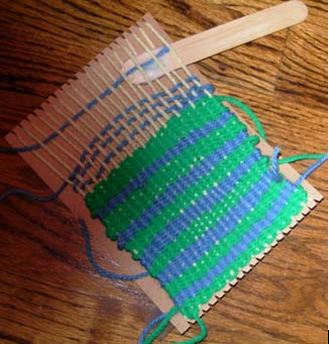
WEAVING
Weaving
itself is one of the oldest surviving practices in the world, with a history
rooted in the Neolithic
period (c.9000-4000BCE). This was very popular where every
household was producing cloth for personal use.
The
majority of woven products are created with one of the following basic weaves:
Plain Weave
Satin or
Twill weave.
Weaving
can be a pattern of different colours, decorative or plain. Weaving can be
really easy or as difficult as you want it to make it.
If you
want to try weaving as a hobby the best way to start of is to get an A4 piece
of thick card and cut slits either end of the card, either horizontal or
vertical, the slits being about half a centimetre or a centimetre apart,
depending on how wide you want your weave to be. Cut a long piece of material
(ideally white wool) and go up and down around the slits to make lines to in
and out to weave. Mastering everything there is to learn about weaving will of
course take time.
Weaving
can be done using different materials, such as plastic, wool, silk, cotton and
many other materials, be creative as possible! My favourite to use is wool
because I can create lovely warm rugs and blankets from it and its nice and
soft to touch.
Weaving
is a fun and an
inexpensive activity, because you can weave using
materials from around your home. Weaving helps your child to develop their fine
motor skills as well as eye-hand coordination and concentration.
If you
would like to learn more and want help with your creations then drop me an
email and I would be happy to help at zenmutz2009@live.co.uk
Post Views : 1896